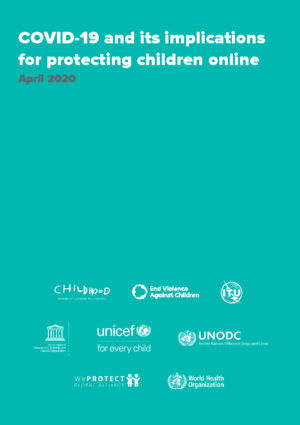Documents
COVID-19 and its Implications for Protecting Children Online
As of April 2020, Covid-19 had led at least 188 country-wide school closures, impacting more than 90% of the world’s student population. Following these mass closures, many children’s learning experiences began being reshaped by the sudden introduction of remote learning, including – where available – technology and virtual platforms as a substitute for the classroom and schoolyard. Similarly, online games, social media and video chat programs are providing opportunities for children to connect with and play with their friends, parents and relatives while in isolation.
While increased online activity supports children’s learning, socialization and play, but also puts them at heightened risk. Such risks include online harms such as sexual exploitation and cyberbullying. Not all risks will translate into actual harm, but children facing other issues in their lives may be more vulnerable. For instance, it is widely well-established that cyberbullying is a major concern among teenagers and has wide-ranging, negative impacts. With many children suddenly experiencing extended periods of unstructured time online and grappling with mounting sources of stress, cyberbullying could proliferate.



